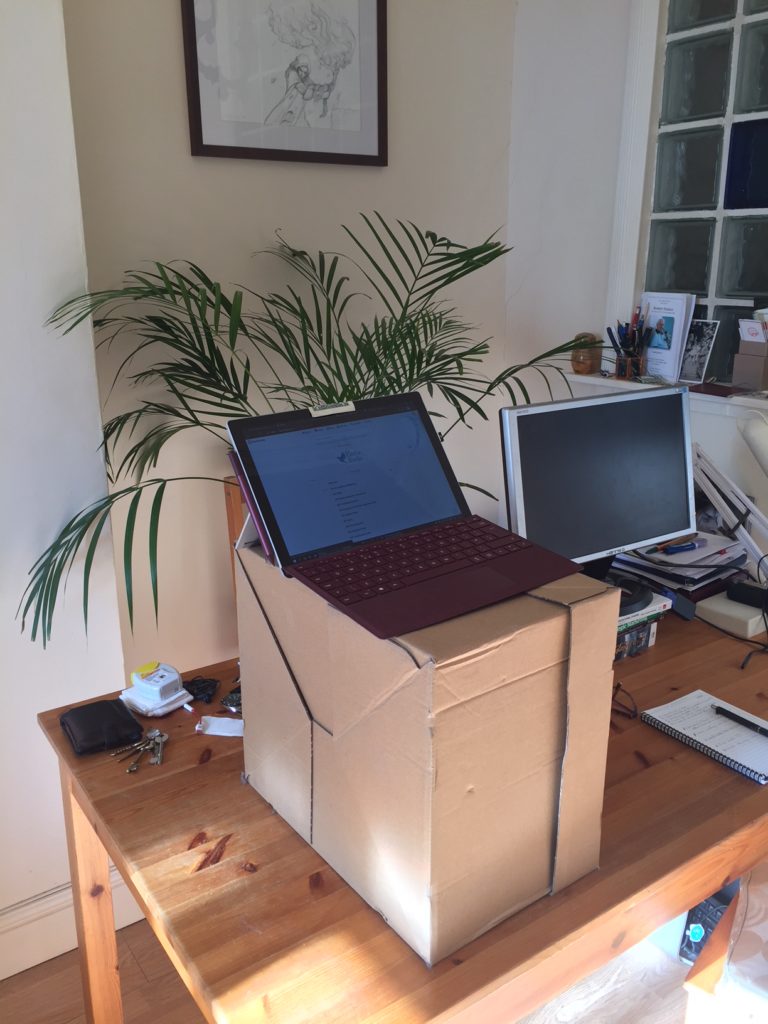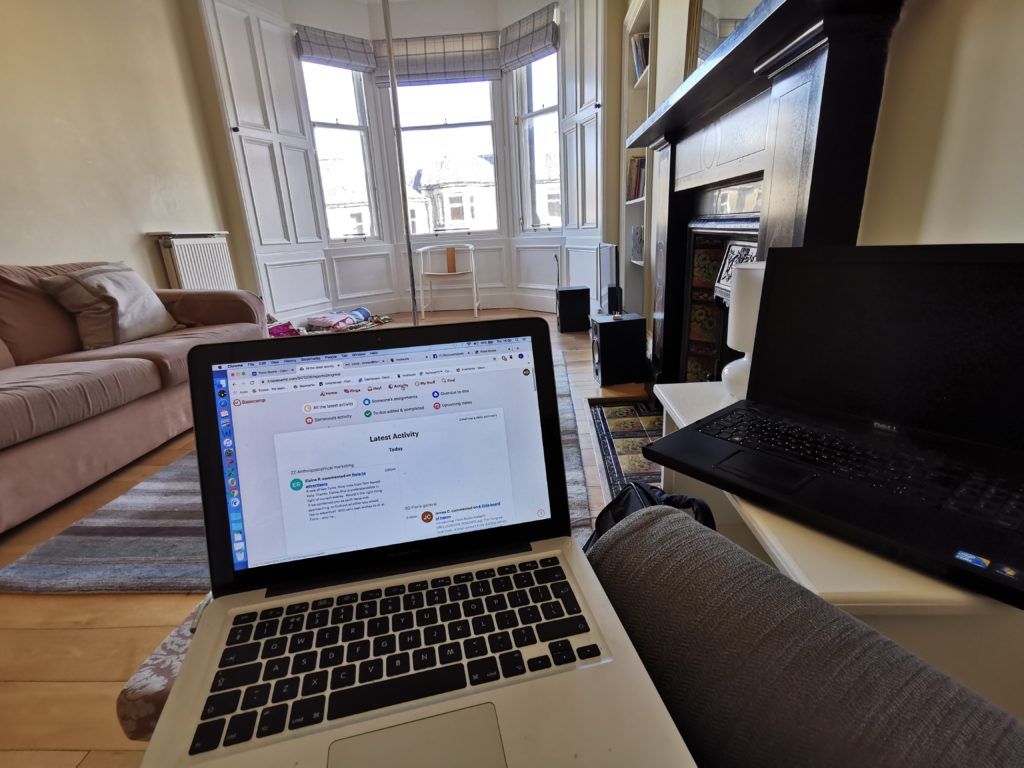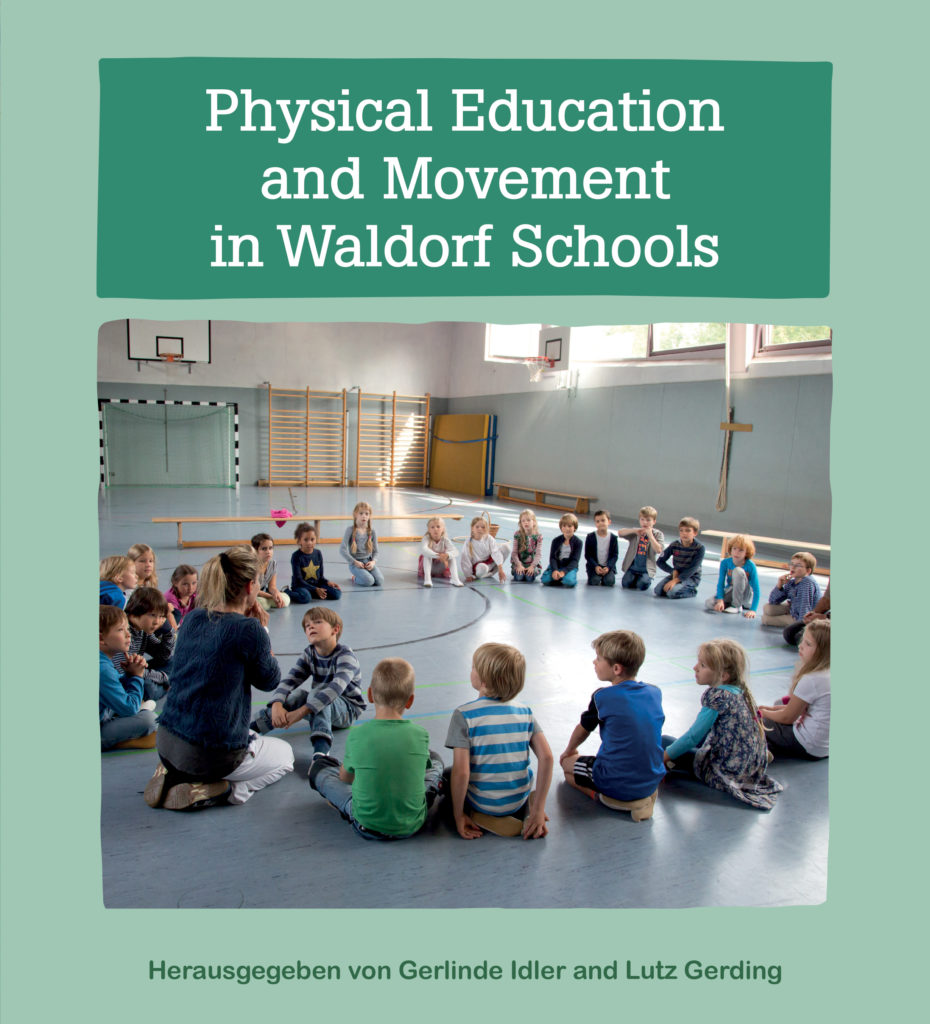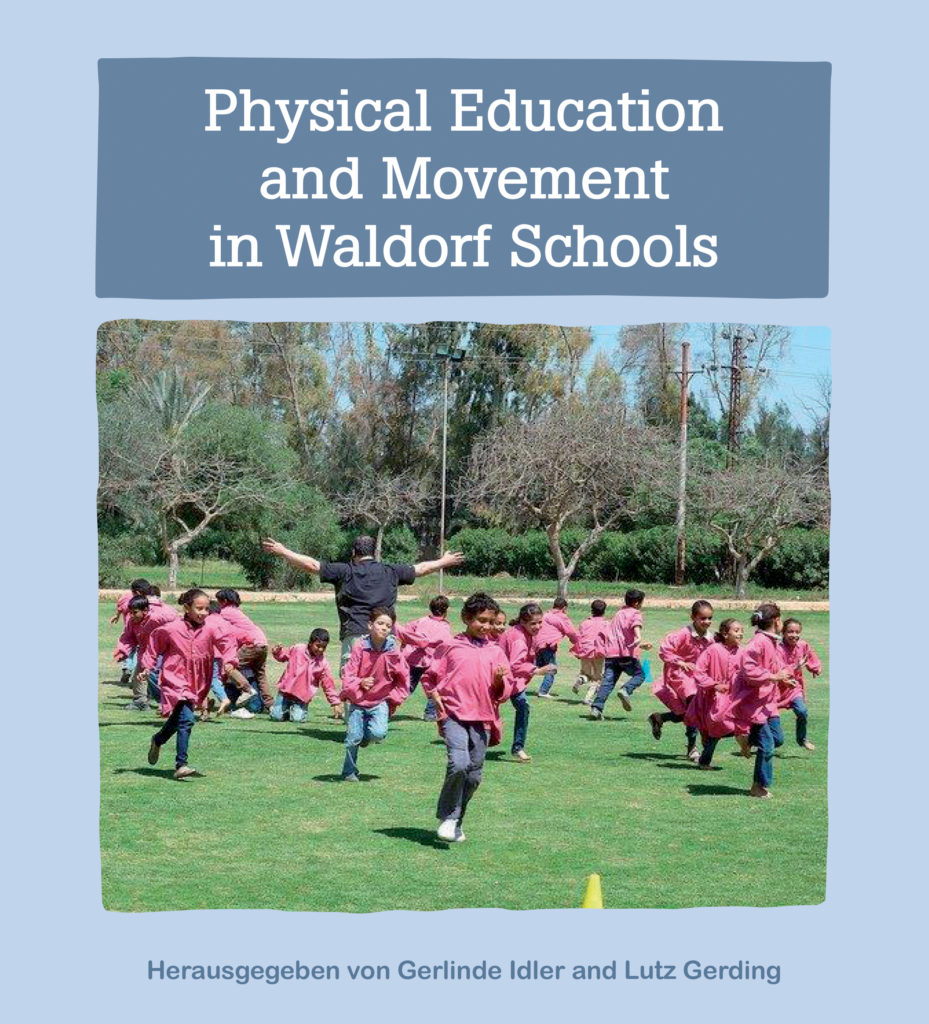How does a publisher create a book during lockdown?
by Floris Books • 7 July 2021 • What we've been up to • 0 Comments
Along with staff at many other companies across the UK, the Floris Books team has been working from home since March 2020. We swapped our large open-plan office with beautiful views across Edinburgh for our spare rooms and kitchen tables in our hometowns from the Scottish Borders, to Midlothian, Glasgow, Edinburgh and Carlisle!
So, how does a publisher create a book during lockdown? Here, members of the Floris team share their experiences of working on our forthcoming book, Physical Education and Movement in Waldorf Schools, from miles apart:
- Meet David, from our editorial team
- Meet Jenny, from our design team
- Meet Elaine, from our marketing team
To give you a bit of an overview before we dive in, this book provides Steiner-Waldorf teachers with advice and exercises for teaching physical education from Bothmer Movement to archery, climbing and swimming. We hope that this book will be a helpful resource for all of the Steiner-Waldorf teachers who have faced such a challenging year with such tenacity, care and optimism. We salute you!
Meet David, from our editorial team
My name is David Budd and I’m the Editorial Assistant at Floris. I help to edit our Steiner-Waldorf, non-fiction books, assisting our authors to develop their ideas and find the clearest way to express them. I’ve been a member of the Anthroposophical Society for nearly 25 years, and some of the earliest books I read about anthroposophy were published by Floris, so to be working here, even from my flat, is an incredible experience.
Physical Education and Movement in Waldorf Schools posed a unique challenge. Most non-fiction books have a number of elements that you don’t normally find in fiction, such as photographs and diagrams, footnotes and endnotes, an index and a bibliography. You have to make sure they’re all correct and that they work together to support and enhance the overall reading experience. This book had all of those (apart from an index), but what made it especially challenging was the thirty or so tables it contained outlining the different lesson plans. These held huge amounts of information, from descriptions of games and activities to lists of equipment required. I needed to find a way of arranging all of this so that it would be clear to Jenny, in our design department, how the tables and text were to be set out on the page. After a bit of distanced experimentation, Jenny and I settled on a method that was (relatively) straightforward. I was finally able to start editing.
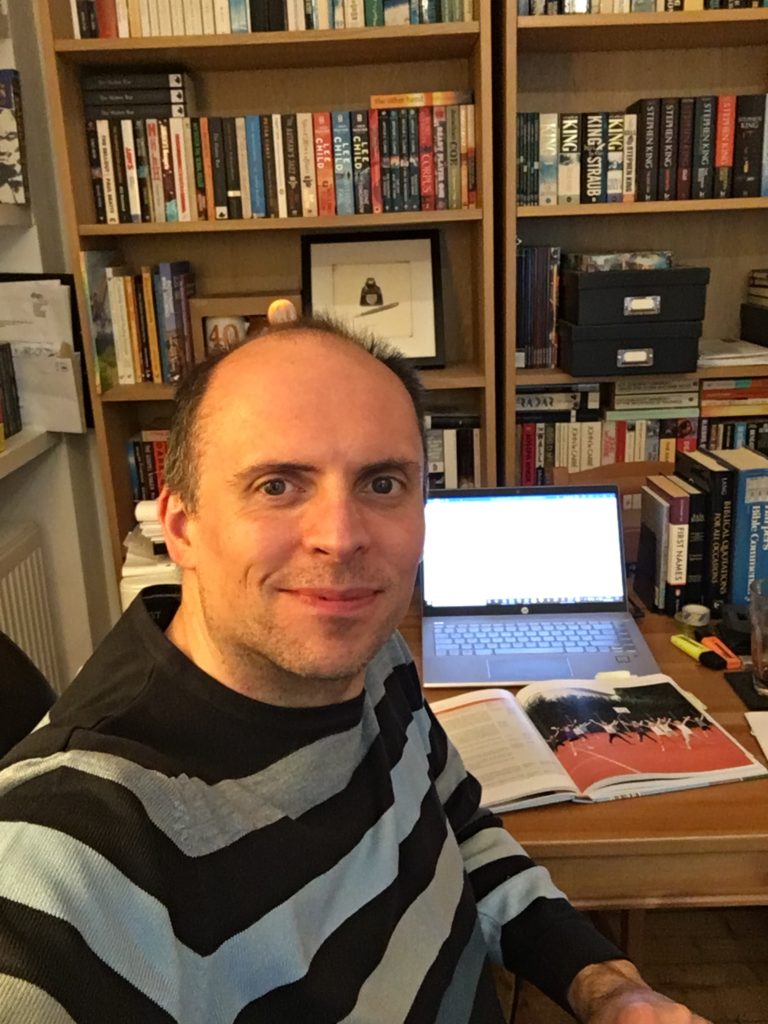
Editing Physical Education and Movement in Waldorf Schools mostly involved tidying up the text and making sure that it flowed smoothly. Occasionally the descriptions of activities were difficult to follow, and I had to resort to somewhat unusual methods to make them clearer. Cue me, with a broom handle in my living room, practising how to hold a javelin or a pole for the pole vault, while watching demonstrations on YouTube! I can only imagine what people passing by on the top decks of buses must have made of it if they glanced in through the window. Such are the lengths an editor will go to in devotion to their craft. I hope you’ll agree it was worth it – especially next time you have to teach javelin or the pole vault!
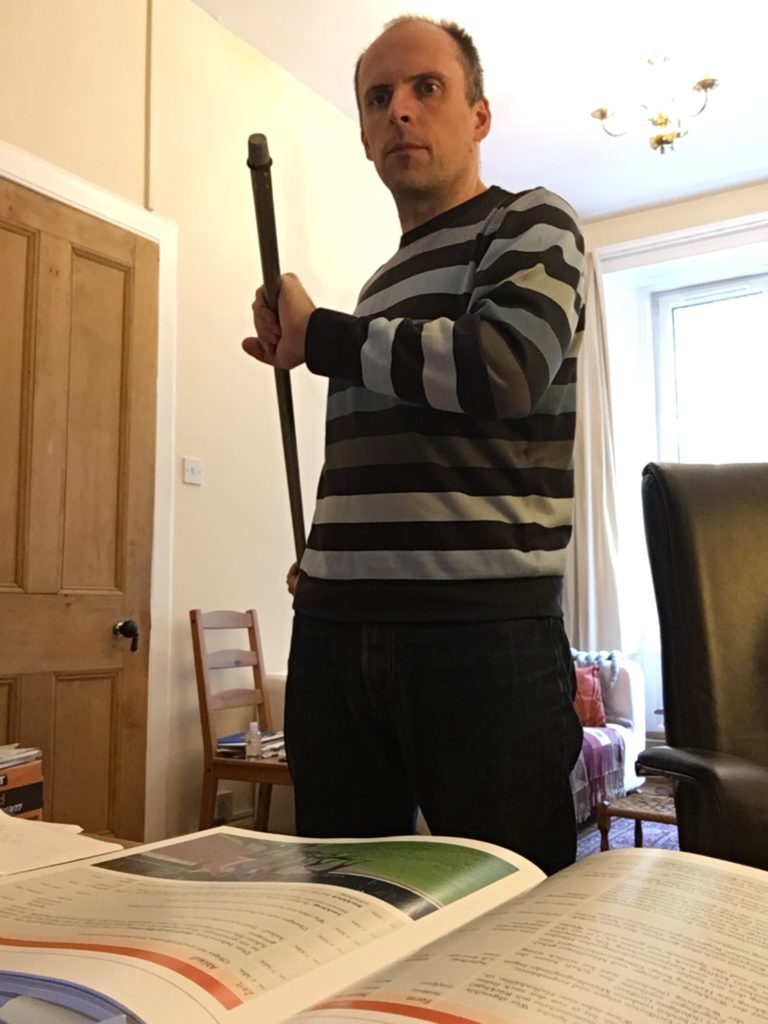
One of the great things about working on the kind of books that I do, is that every day is a school day. What I like about the approach to physical education presented in this book is the way it integrates it with the rest of the Waldorf curriculum. Topics covered in the other lessons are used as inspiration for games and activities, and I also like the way that the introduction of certain activities coincide with the different developmental stages of the students. It fully embraces the Steiner-Waldorf ethos of holistic education that takes into account the development of the whole person, rather than just one aspect of them.
Working from home for such an extended period of time is challenging. When everyone is in the same place you can discuss ideas and bounce queries off one another quickly. So progress has been slower and this has led to delays. That said, once the queries were ironed out, I am glad I was able to edit this book at home where it is quieter and there are fewer distractions. It’s such a large book, and I became so immersed in it, it’s hard to do that kind of sustained and focused work in a busy office – all of those theatrics with that broom handle would have created some hilarity for a start! But I am very much looking forward to getting back into the office with everyone at some point, just as I am excited to see Physical Education and Movement in Waldorf Schools become an actual book. It looks amazing and I think Waldorf teachers will find it to be an invaluable resource that they can keep going back to for many years.
Meet Jenny, from our design department
My name is Jenny Skivington and I’m a designer at Floris Books. Part of my remit is to create beautiful eye-catching covers as well as appealing and clear layouts for our readers. Over the past year with our team being so far apart we’ve had to adapt the way we work. Pre-pandemic we shared printed proofs, moving big wads of paper from desk-to-desk between departments for feedback. Now we largely share PDF proofs online and people add their comments digitally. While feedback is slower to collate and checking a query with someone takes longer than it would have when I could just pop across the office, there are huge environmental benefits – we’ve saved a lot of paper. It is definitely trickier trying to colour match screen proofs though! Colours appear differently on everyone’s screen and then differently again in print.
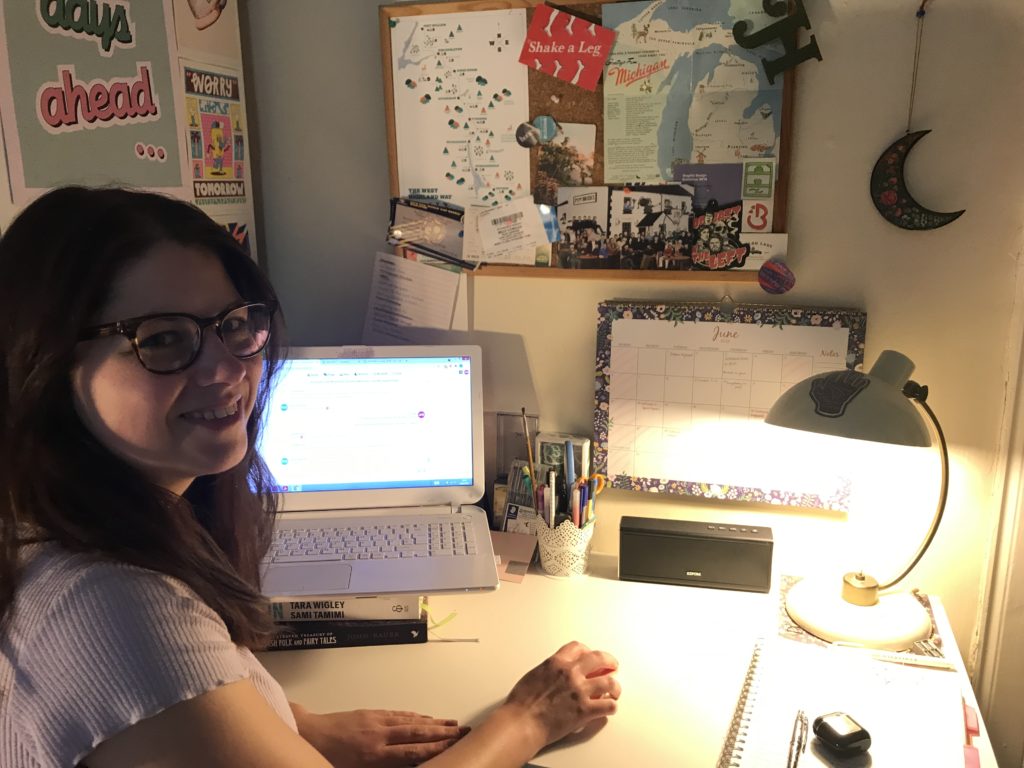
One of my early steps for this book was to select an image and create a design for the cover, considering what font we wanted to use and how we wanted to layout the space. This happens early on so that the marketing team can begin to promote the book in catalogues and information sheets for the book trade. This book has over 200 photographs, so there were lots of images to choose from for the main cover image. The key thing is to pick an image that reflects the content and title, and to consider what’s going to work well in the physical space of the cover but will also appeal to the book buyer. Generally, I select four or five different options then share these with the rest of the team for feedback. Here are some examples below of the mock cover images which were initially considered:
And here’s the winning cover:
The next step is taking the text from the editorial team and organising the layout. As David highlighted this was particularly challenging for this book as there are so many tables containing lots of important information. David and I liaised to come up with a few options of how this could be presented. Normally, I could head across the office and grab David for a quick chat and show him some examples, but not at the moment! While there have been definite benefits to home working, including having a quiet space free from the distractions of the office, having quick face-to-face chats has been something I’ve missed. Although it’s easier for people to have uninterrupted focus time at home – a digital nudge is easier to set aside than someone standing at your desk!
I’ve also missed seeing the advance copies of the new books arrive at the office – it’s really rewarding holding the physical copy of something you’ve been working on for months. Hopefully by the time Physical Education and Movement in Waldorf Schools is published in September, we’ll be at the office in person to admire it!
Meet Elaine, from our marketing team
My name is Elaine Reid and I’m the Community Marketing Manager at Floris Books. It’s my job to spread the word about our fantastic new books to Steiner-Waldorf teachers, parents, anthroposophical and independent bookshops, and our wider communities. Over the past year, faced with the challenges of the pandemic, all of us in the marketing team have adapted the way we connect with people dramatically.
The joy of seeing piles of new books land in the office which we would then send out to our bookshop manager friends and review contacts is obviously not happening. Instead, we are sharing digital samples. Printing catalogues is no longer viable for us either, so we made the switch to producing digital catalogues and sharing via our online mailing lists. Do sign up if you haven’t already!
As a team, we’ve also had to adapt the way we connect with each other. Rather than chatting about ideas together in our office meeting room with cups of coffee and occasional plate of biscuits, we’ve interacted virtually instead. Seeing the team in person is definitely the biggest thing I’ve missed from working from home. Thankfully, there are lots of clever platforms which have helped us to stay in touch and also organise our planning online. For example, over the past year we’ve started using Miro (picture a colourful post-it extravaganza in digital form), for brainstorming ideas for our new books. Plus, there have been some definite benefits to working from home too – being able to take a break at lunch time and go for a walk with my border collie to clear my head has been one of my favourites! I’ve also enjoyed only having to commute to the end of my garden, rather than make my way through rush hour traffic into the city.
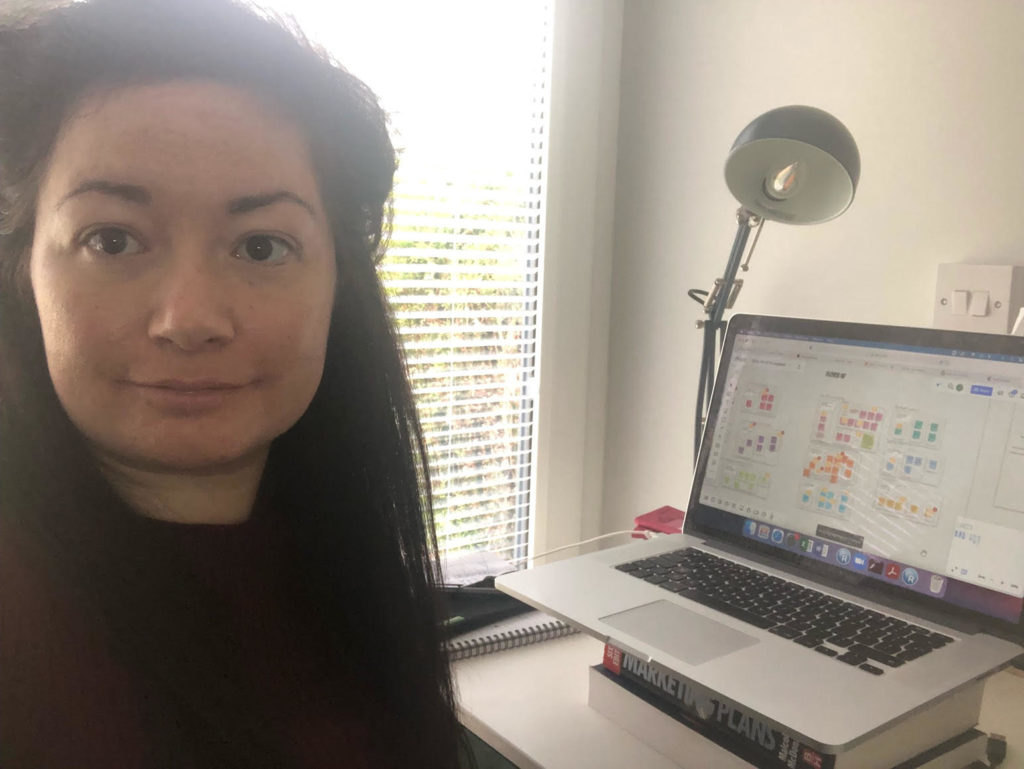
As we’ve worked on promotion for our forthcoming book, Physical Education and Movement in Waldorf Schools, which releases in September, we’ve also taken advantage of new opportunities which have arisen during the pandemic. We put together a virtual exhibit at the Steiner-Waldorf School Fellowship National Teacher Conference in April. This was a great chance for us to connect with Steiner-Waldorf teachers from around the world to tell them about our new books. Many of the teachers we reached wouldn’t have been able to attend this UK event if it hadn’t been online.
Physical Education and Movement in Waldorf Schools will be one of our key new books in our forthcoming Steiner-Waldorf Education Catalogue 2021, which I’m currently working on with my colleague Ali. This new catalogue will publish digitally this autumn and you can sign up here to make sure you get your copy as soon as it’s published. There are definite environmental benefits for going digital again this autumn – we’re saving paper and reducing our carbon footprint by not shipping catalogue across the world. I’m currently liaising with Jenny and David who literally know this book inside-out, to create an article on the book for the catalogue with sample activities which teachers can try with their class.
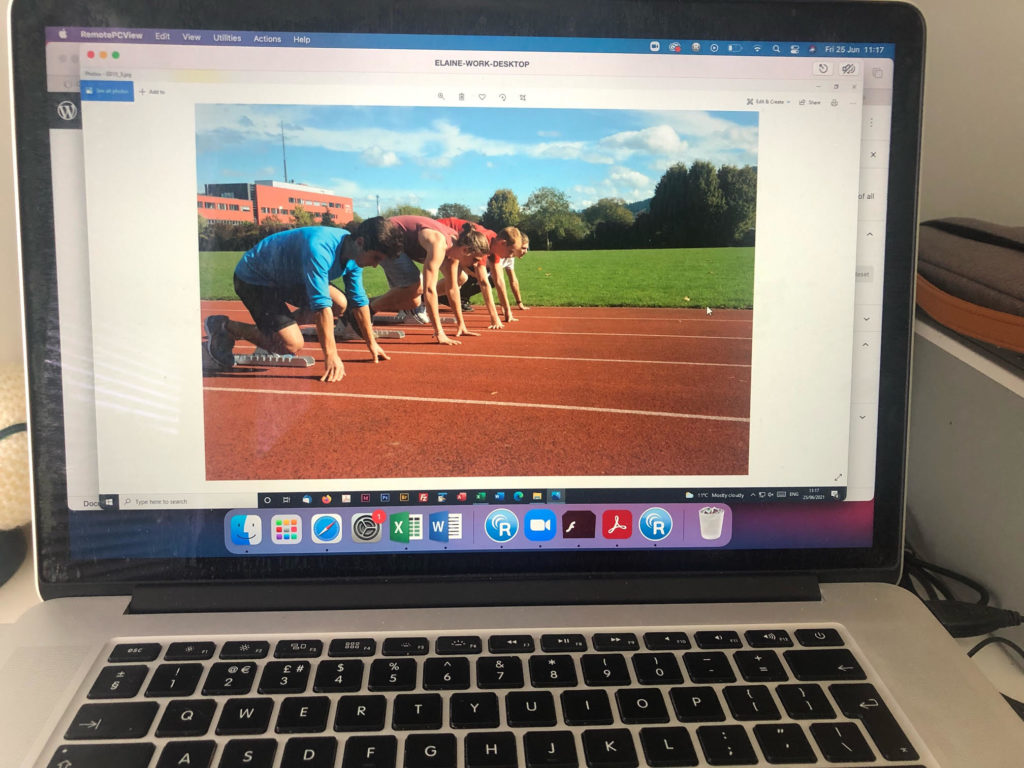
We hope you’ve enjoyed this journey inside our at-home working! Keep up-to-date on all of our new books by joining our mailing list and connect with us on Facebook, Twitter and Instagram. We’d love to hear from you.
